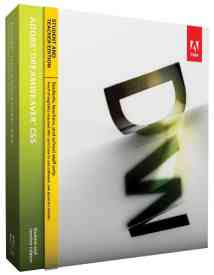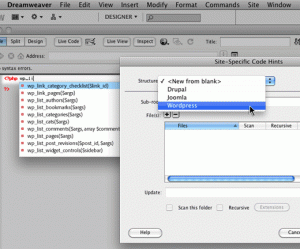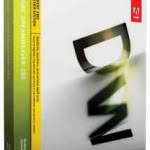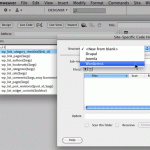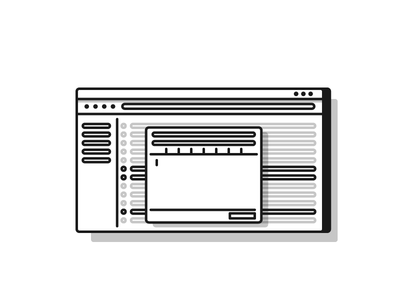In this post we are going to talk about Microsoft Web Expression, The HTML Editor 2010 SE and Adobe Dreamweaver CS5.
Adobe Dreamweaver CS5
Dreamweaver CS5 is a web authoring tool that is developed by Adobe. Adobe makes other tools that are usual in the creation, designing and development of websites. CS5 is the latest version of Dreamweaver and includes numerous new features. Some of those features are CSS related including CSS Enable/Disable, CSS Inspection and CSS Starter Layouts. Dynamically-Related Files, Live view navigation, PHP Custom class code hinting and simplified site setup are some of the top new features in CS5. These new features alone are the reason why I chose Adobe Dreamweaver CS5 as my web authoring tool, not to mention that real web design professionals have always supported this tool in their industry.
Here is a description of the top new features for Adobe Dreamweaver CS5:
Adobe BrowserLab
Dreamweaver CS5 integrates with Adobe BrowserLab, one of the new CS Live online services, which provides a fast and accurate solution for cross-browser compatibility testing. With BrowserLab you can preview web pages and local content using multiple viewing and comparison tools.
Business Catalyst integration
Adobe Business Catalyst is a hosted application that replaces traditional desktop tools with one, central platform for web designers. The application works hand-in-hand with Dreamweaver, and lets you build everything from basic data-driven websites to powerful online stores.
CSS enable/disable
CSS enable/disable lets you disable and re-enable CSS properties directly from the CSS Styles panel. Disabling a CSS property simply comments out the specified property without actually deleting it.
CSS Inspection
CSS Inspect mode lets you visually display the CSS box model properties—including padding, border, and margin—in detail without reading code or requiring a separate third-party utility such as Firebug.
CSS starter layouts
Dreamweaver CS5 includes updated and simplified CSS starter layouts. The complex descendent selectors from the CS4 layouts have been removed and replaced with simplified, easy-to-understand classes.
Dynamically-Related Files
The Dynamically-Related Files feature lets you discover all of the external files and scripts necessary to assemble PHP-based Content Management System (CMS) pages, and displays their filenames in the Related Files toolbar. By default Dreamweaver supports file discovery for the WordPress, Drupal, and Joomla! CMS frameworks.
Live view navigation
Live view navigation activates links in Live view, allowing you to interact with server-side applications and dynamic data. The feature also allows you to enter a URL to inspect pages served from a live web server and edit pages you have browsed to if they exist in one of your locally defined sites.
PHP custom class code hinting
PHP custom class code hinting displays the proper syntax for PHP functions, objects, and constants, helping you type more accurate code. Code hinting also works with your own custom functions and classes, as well as third-party frameworks, such as the Zend framework.
Simplified site setup
The newly redesigned Site Definition dialog box (now the Site Setup dialog box) makes it easier to set up a local Dreamweaver site so that you can start building web pages right away. The remote server category lets you specify your remote and testing servers in one view.
Site-specific code hints
The Site-specific code hints feature lets you customize your coding environment when working with third-party PHP libraries and CMS frameworks such as WordPress, Drupal, Joomla!, or other frameworks. Theme files for blogs and other custom PHP files and directories can be included or excluded as sources for code-hints.
Subversion support enhancements
Dreamweaver CS5 expands its support for Subversion, allowing you to move, copy, and delete files locally, and then synchronize changes with your remote SVN repository. The new Revert command allows you to quickly correct tree conflicts or rollback to a previous version of a file. Additionally, a new extension allows you to specify which version of Subversion you would like to work with on a given project.
Adobe Dreamweaver is a very powerful tool, especially when bundled with other tools Adobe has created to work with Dreamweaver. The Web Premium Collection includes Dreamweaver CS5, Flash Catalyst CS5, Flash Professional CS5, Flash Builder 4 Standard, Photoshop CS5 Extended, Illustrator CS5, Acrobat 9 Pro, Fireworks CS5 and Contribute CS5. This is exactly why I chose to work with Dreamweaver as my main Web Authoring tool.
Microsoft Web Expressions is a decent tool to use when creating web sites. Web Expressions is not as powerful as Dreamweaver in terms of coding and Dreamweaver CS5’s ability for “live code view” which allows you to edit the code and instantly see results in next pane. Microsoft Web Expressions does not tightly integrate other technologies such as Flash or Fireworks, which in my opinion, can mean the difference between an eye-popping website and just an eyesore. Web Expressions is Microsoft Windows only program, meaning it does not work on Linux. My laptop is not really that powerful, so I run Ubuntu 10.10 on it because it’s fast, uses fewer resources and is very reliable. Combine this with the use of the Web Premium collection and I have a portable development environment I can take on the road with me.
Another tool that came into mind was Coffee Cup’s new “The HTML Editor 2010 SE”. While this product is new, and only $49 it still doesn’t compete with the complexity of Dreamweaver CS5. With a product like The HTML Editor 2010 SE I would be forced to load other programs such as Paint.NET and NotePad++ onto my system just to keep up with the features of Dreamweaver CS5. So the fact that The HTML Editor 2010 SE does not integrate other necessary designing tools into its environment is a reason for me to steer clear of it.
